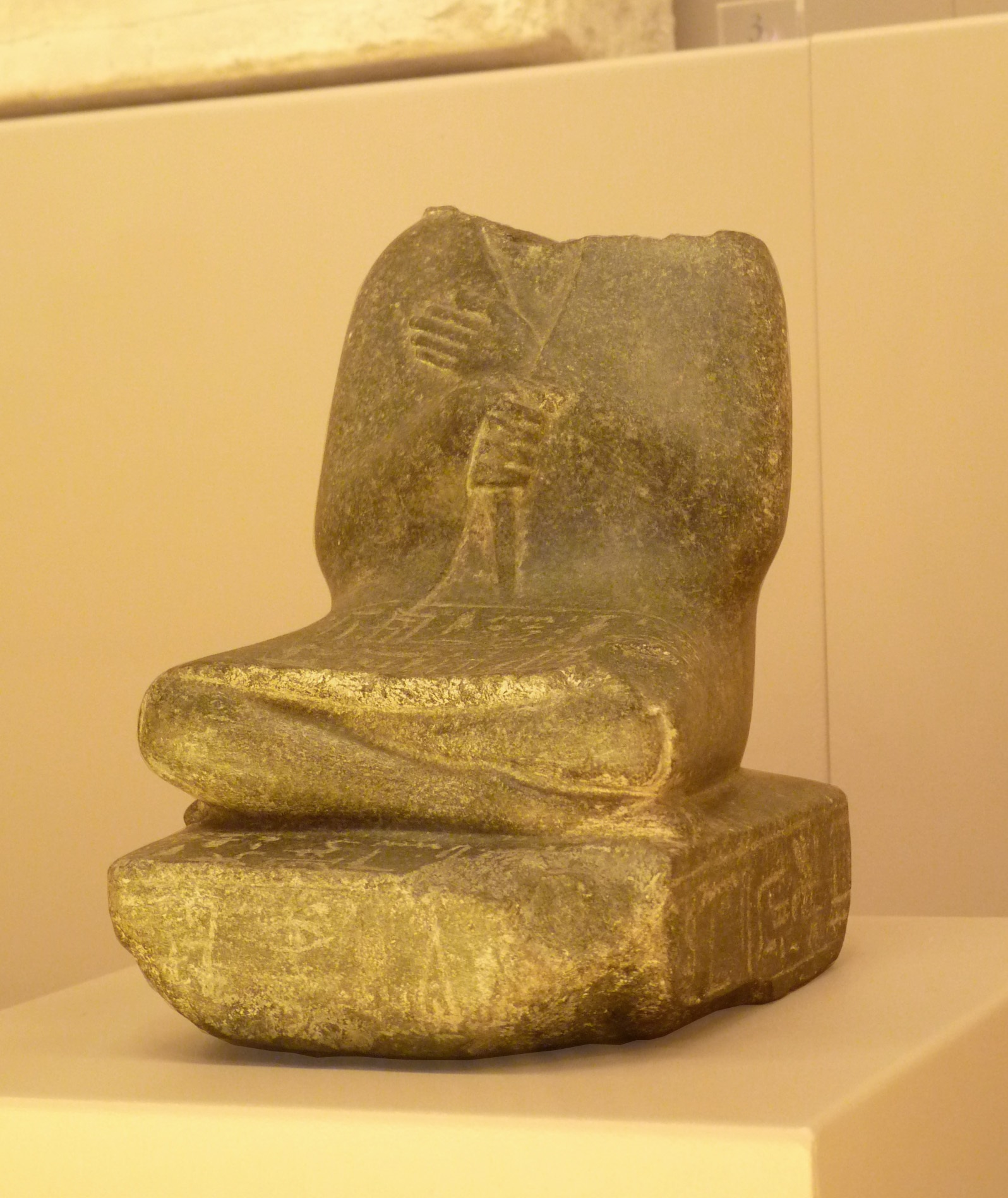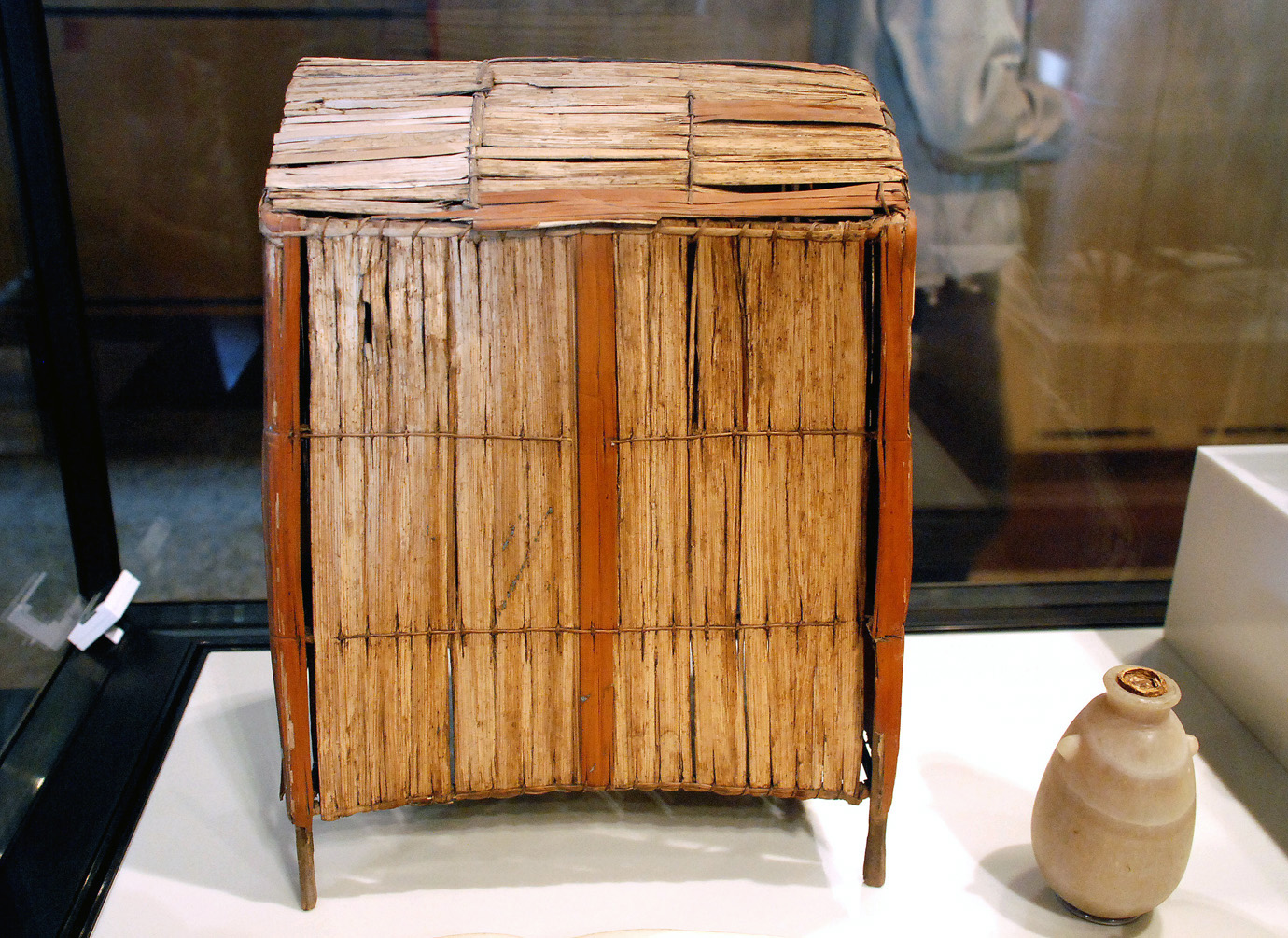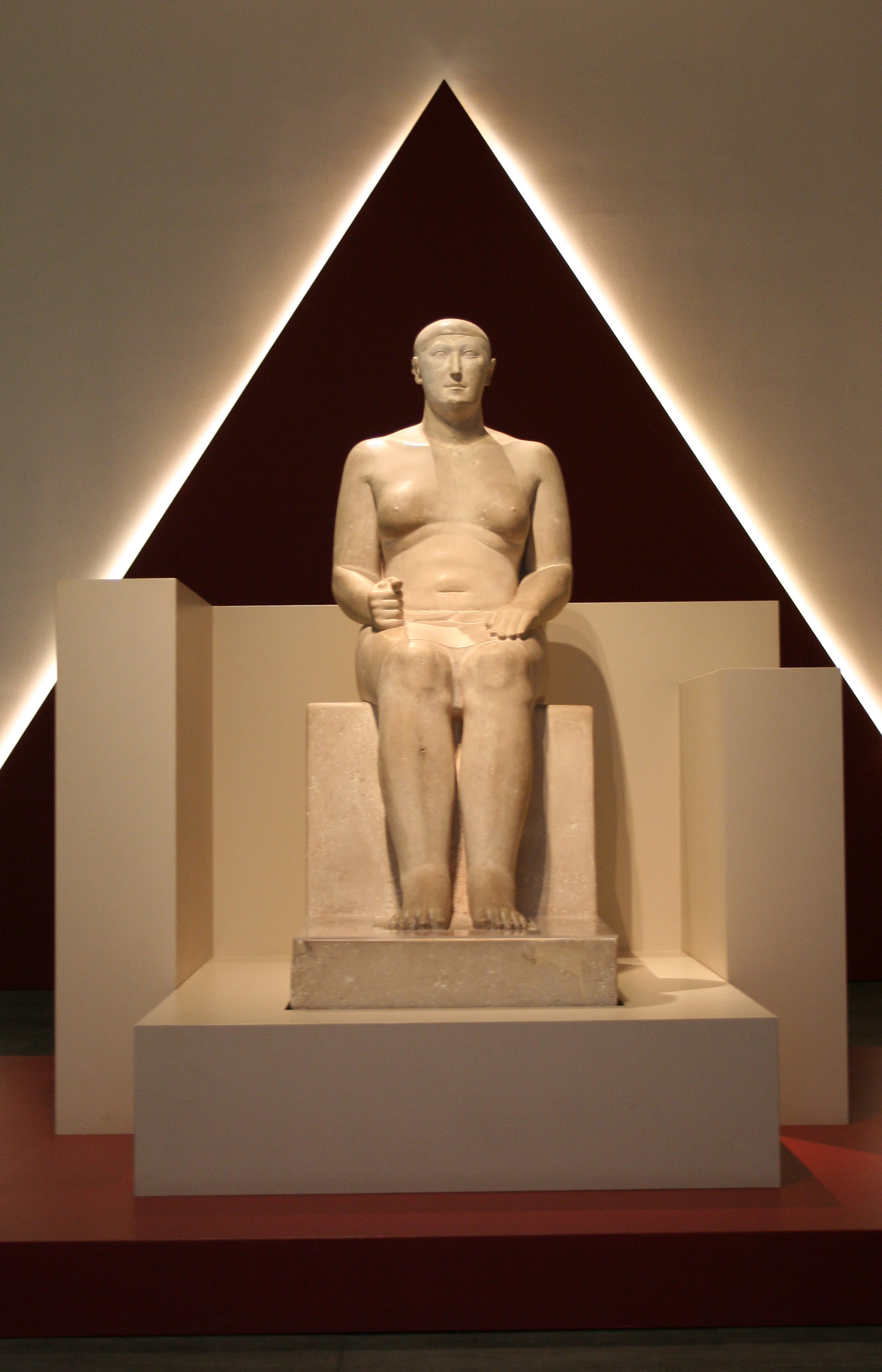|
Senebhenaf
Senebhenaf was an ancient Egyptian vizier during the Second Intermediate Period. Senebhenaf is known from the coffin of his daughter, queen Mentuhotep;W. Grajetzki, ''Court Officials of the Egyptian Middle Kingdom'', London 2009, p. 40. the inscriptions state that her father was Senebhenaf and her mother was Sobekhotep. Queen Mentuhotep was the wife of king Djehuti. The position of this king within the Second Intermediate Period is uncertain (he has been attributed to both the early 16th and the early 17th dynasties), so the position of Senebhenaf is also not yet fixed. Some EgyptologistsK.S.B. Ryholt, op. cit., p. 192. suggested that Senebhenaf was possibly one of the two namesake sons of the vizier Ibiaw who officiated under the 13th Dynasty pharaohs Wahibre Ibiaw and/or Merneferre Ay; if validated, this association could establish a significant temporal link between the Lower Egypt rulers of the mid-late 13th Dynasty and the Upper Egypt kingdom ruled by Djehuti ... [...More Info...] [...Related Items...] OR: [Wikipedia] [Google] [Baidu] |
Ibiaw (vizier)
Ibiaw or Ibiau was an ancient Egyptian vizier and ''Chief of the town'' (i.e. mayor) during the 13th Dynasty, likely under pharaohs Wahibre Ibiaw and/or Merneferre Ay. Attestations There are no monuments which directly represent him, but he is mentioned as a vizier on three objects: a stele found at Deir el-Bahari and now exhibited in the Metropolitan Museum of Art22.3.307, another stele found inside the sanctuary of Heqaib at Elephantine, and a statuette probably from the Temple of Osiris at Abydos and now in Bologna (KS 1839). By combining the three monuments, egyptologists were able to realize a genealogy for Ibiaw: Some other monuments datable to this period refer to one or more dignitaries called Ibiaw. Some egyptologists believe that those objects could refer to the namesake vizier in some earlier stages of his career. Such statements would expand Ibiaw's genealogy: *One of the two sons of Ibiaw may have been the vizier Senebhenaf, father of queen Mentuhotep, hers ... [...More Info...] [...Related Items...] OR: [Wikipedia] [Google] [Baidu] |
Mentuhotep (queen)
Mentuhotep was an ancient Egyptian queen of the Second Intermediate Period, wife of pharaoh Djehuti. Her main title was Great Royal Wife. Another title was Khenemetneferhedjet (''she who is united with the white crown''). Queen Mentuhotep is known from parts of her burial equipment found between 1822 and 1825 near Thebes at Dra' Abu el-Naga' by the Italian excavator Giuseppe Passalacqua. He found a canopic chest with cosmetic boxes. The objects were later sold to Berlin. Around 1832 John Gardner Wilkinson copied inscriptions of a coffin naming a queen with the same name. The original coffin is now lost. On the coffin it is stated that she was the daughter of the vizier Senebhenaf and of a woman called Sobekhotep. The inside of the coffin was decorated with different spells, many of them belong to the Egyptian Book of the Dead. Her coffin is one of the earliest sources for this funerary composition. It is not fully clear whether the coffin and the canopic chest were found in t ... [...More Info...] [...Related Items...] OR: [Wikipedia] [Google] [Baidu] |
Vizier (Ancient Egypt)
The vizier () was the highest official in ancient Egypt to serve the pharaoh (king) during the Old, Middle, and New Kingdoms. Vizier is the generally accepted rendering of ancient Egyptian , etc., among Egyptologists. The ''Instruction of Rekhmire'' (''Installation of the Vizier''), a New Kingdom text, defines many of the duties of the , and lays down codes of behavior. The viziers were often appointed by the pharaoh. During the 4th Dynasty and early 5th Dynasty, viziers were exclusively drawn from the royal family; from the period around the reign of Neferirkare Kakai onwards, they were chosen according to loyalty and talent or inherited the position from their fathers. Responsibilities The viziers were appointed by the pharaohs and often belonged to a pharaoh's family. The vizier's paramount duty was to supervise the running of the country, much like a prime minister. At times this included small details such as sampling the city's water supply. All other lesser supervisor ... [...More Info...] [...Related Items...] OR: [Wikipedia] [Google] [Baidu] |
Wahibre Ibiau
Wahibre Ibiau (throne name: Wahibre; birth name: Ibiau, also Ibiaw, Iaib, or Ia-ib) was an ancient Egyptian pharaoh of the 13th Dynasty, who reigned c. 1670 BC for 10 years 8 months and 29 days according to the Turin King List. Attestations Despite a relatively long reign for the period, Wahibre Ibiau is known from only a few objects, mostly scarab seals bearing his name. He is also named on the stela of an official named Sahathor, probably from Thebes. Finally, a fragment of faience from El-Lahun mentions this king. A notable member of Ibiau's royal court was the namesake vizier Ibiau. It has been suggested that this vizier could have been the same person as the pharaoh Ibiau earlier in his life, but in more recent times it was pointed out that such an identification is conjectural and unproven. Wolfram Grajetzki, ''Court Officials of the Egyptian Middle Kingdom'', London 2009, p. 40. See also * List of pharaohs The title "Pharaoh" is used for those rulers of A ... [...More Info...] [...Related Items...] OR: [Wikipedia] [Google] [Baidu] |
Ancient Egyptian Viziers
Ancient history is a time period from the beginning of writing and recorded human history to as far as late antiquity. The span of recorded history is roughly 5,000 years, beginning with the Sumerian cuneiform script. Ancient history covers all continents inhabited by humans in the period 3000 BCAD 500. The three-age system periodizes ancient history into the Stone Age, the Bronze Age, and the Iron Age, with recorded history generally considered to begin with the Bronze Age. The start and end of the three ages varies between world regions. In many regions the Bronze Age is generally considered to begin a few centuries prior to 3000 BC, while the end of the Iron Age varies from the early first millennium BC in some regions to the late first millennium AD in others. During the time period of ancient history, the world population was already exponentially increasing due to the Neolithic Revolution, which was in full progress. While in 10,000 BC, the world population stood ... [...More Info...] [...Related Items...] OR: [Wikipedia] [Google] [Baidu] |
Labib Habachi
Labib Habachi (لبيب حبشي) (April 18, 1906 – February 18, 1984) was an influential Coptic Egyptian Egyptologist. Dr Habachi spent 30 years in the Antiquities Department of the Egyptian Government, ending his career as Chief inspector. During this period he spent an enormous amount of time in numerous dig sites in Egypt and the Sudan. He left government work to accept a position at the Oriental Institute of the University of Chicago as an Archaeological Consultant to its Nubian Expedition. Tell el-Dab'a Between 1929 and 1939, Pierre Montet excavated at Tanis, finding the royal necropolis of the Twenty-first and Twenty-second Dynasties — the finds there almost equalled that of Tutankhamun's tomb in the Valley of the Kings. He believed that he found the location of Avaris, and this opinion was widely accepted at the time. Yet Habachi was not convinced. In 1941-42 he worked at Tell el-Dab'a for the Egyptian Antiquities Service and came to the conclusion th ... [...More Info...] [...Related Items...] OR: [Wikipedia] [Google] [Baidu] |
Wolfram Grajetzki
Wolfram Grajetzki (born 1960, in Berlin) is a German Egyptologist. He studied at Free University of Berlin and made his Doctor of Philosophy at the Humboldt University of Berlin. He performed excavations in Egypt, but also in Pakistan. He published articles and several books on the Egyptian Middle Kingdom The Middle Kingdom of Egypt (also known as The Period of Reunification) is the period in the history of ancient Egypt following a period of political division known as the First Intermediate Period. The Middle Kingdom lasted from approximately ..., on administration, burial customs and queens. He is also a researcher at the Centre for Advanced Spatial Analysis, University College London, UK, working on the project 'Digital Egypt for Universities'. Works *''Two Treasurers of the Late Middle Kingdom'' (British Archaeological Report S1007) Oxford, 2001 ISSN 0143-3067 *''Burial Customs in Ancient Egypt: Life in Death for Rich and Poor'' Duckworth Egyptology, London 2003 *' ... [...More Info...] [...Related Items...] OR: [Wikipedia] [Google] [Baidu] |
Upper Egypt
Upper Egypt ( ar, صعيد مصر ', shortened to , , locally: ; ) is the southern portion of Egypt and is composed of the lands on both sides of the Nile that extend wikt:downriver, upriver from Lower Egypt in the north to Nubia in the south. In ancient Egypt, Upper Egypt was known as ''tꜣ šmꜣw'', literally "the Land of Reeds" or "the Cyperaceae, Sedgeland". It is believed to have been united by the rulers of the supposed Thinite Confederacy who absorbed their rival city states during the Naqada III period (c. 3200–3000 BC), and its subsequent unification with Lower Egypt ushered in the Early Dynastic Period (Egypt), Early Dynastic period. Upper and Lower Egypt became intertwined in the symbolism of Pharaoh, pharaonic sovereignty such as the Pschent double crown. Upper Egypt remained as a historical region even after the classical period. Geography Upper Egypt is between the Cataracts of the Nile beyond modern-day Aswan, downriver (northward) to the area of El-Ayait, ... [...More Info...] [...Related Items...] OR: [Wikipedia] [Google] [Baidu] |
Lower Egypt
Lower Egypt ( ar, مصر السفلى '; ) is the northernmost region of Egypt, which consists of the fertile Nile Delta between Upper Egypt and the Mediterranean Sea, from El Aiyat, south of modern-day Cairo, and Dahshur. Historically, the Nile River split into seven branches of the delta in Lower Egypt. Lower Egypt was divided into nomes and began to advance as a civilization after 3600 BC. Today, it contains two major channels that flow through the delta of the Nile River – Mahmoudiyah Canal (ancient Agathos Daimon) and Muways Canal (, "waterway of Moses"). Name In Ancient Egyptian, Lower Egypt was as ''mḥw'' and means ''"north"''. Later on, during Antiquity and the Middle Ages, Greeks and Romans called it ''Κάτω Αἴγυπτος'' or ''Aegyptus Inferior'' both meaning "Lower Egypt", but Copts carried on using the old name related to the north – ''Tsakhet'' () or ''Psanemhit'' () meaning the "Northern part". It was further divided into number of re ... [...More Info...] [...Related Items...] OR: [Wikipedia] [Google] [Baidu] |
Merneferre Ay
Merneferre Ay (also spelled Aya or Eje, sometimes known as Ay I) was an ancient Egyptian pharaoh of the mid 13th Dynasty. The longest reigning pharaoh of the 13th Dynasty, he ruled a likely fragmented Egypt for over 23 years in the early to mid 17th century BC. A pyramidion bearing his name shows that he possibly completed a pyramid, probably located in the necropolis of Memphis. Merneferre Ay is the last pharaoh of the 13th Dynasty to be attested outside Upper Egypt. In spite of his long reign, the number of artefacts attributable to him is comparatively small. This may point to problems in Egypt at the time and indeed, by the end of his reign, "the administration f the Egyptian stateseems to have completely collapsed". It is possible that the capital of Egypt since the early Middle Kingdom, Itjtawy was abandoned during or shortly after Ay's reign. For this reason, some scholars consider Merneferre Ay to be the last pharaoh of the Middle Kingdom of Egypt. Chronology Chron ... [...More Info...] [...Related Items...] OR: [Wikipedia] [Google] [Baidu] |
13th Dynasty
In music or music theory, a thirteenth is the Musical note, note thirteen scale degrees from the root (chord), root of a chord (music), chord and also the interval (music), interval between the root and the thirteenth. The interval can be also described as a Interval (music)#Simple and compound, compound major sixth, sixth, spanning an octave plus a sixth. The thirteenth is most commonly major or minor . A thirteenth chord is the stacking of six (major third, major or minor third, minor) thirds, the last being above the 11th of an eleventh chord. Thus a thirteenth chord is a tertian (built from thirds) chord containing the interval of a thirteenth, and is an extended chord if it includes the ninth and/or the eleventh. "The jazzy thirteenth is a very versatile chord and is used in many genres." Since 13th chords tend to become unclear or confused with other chords when Inverted chord, inverted, they are generally found in root position.Benward & Saker (2009). ''Music in ... [...More Info...] [...Related Items...] OR: [Wikipedia] [Google] [Baidu] |






